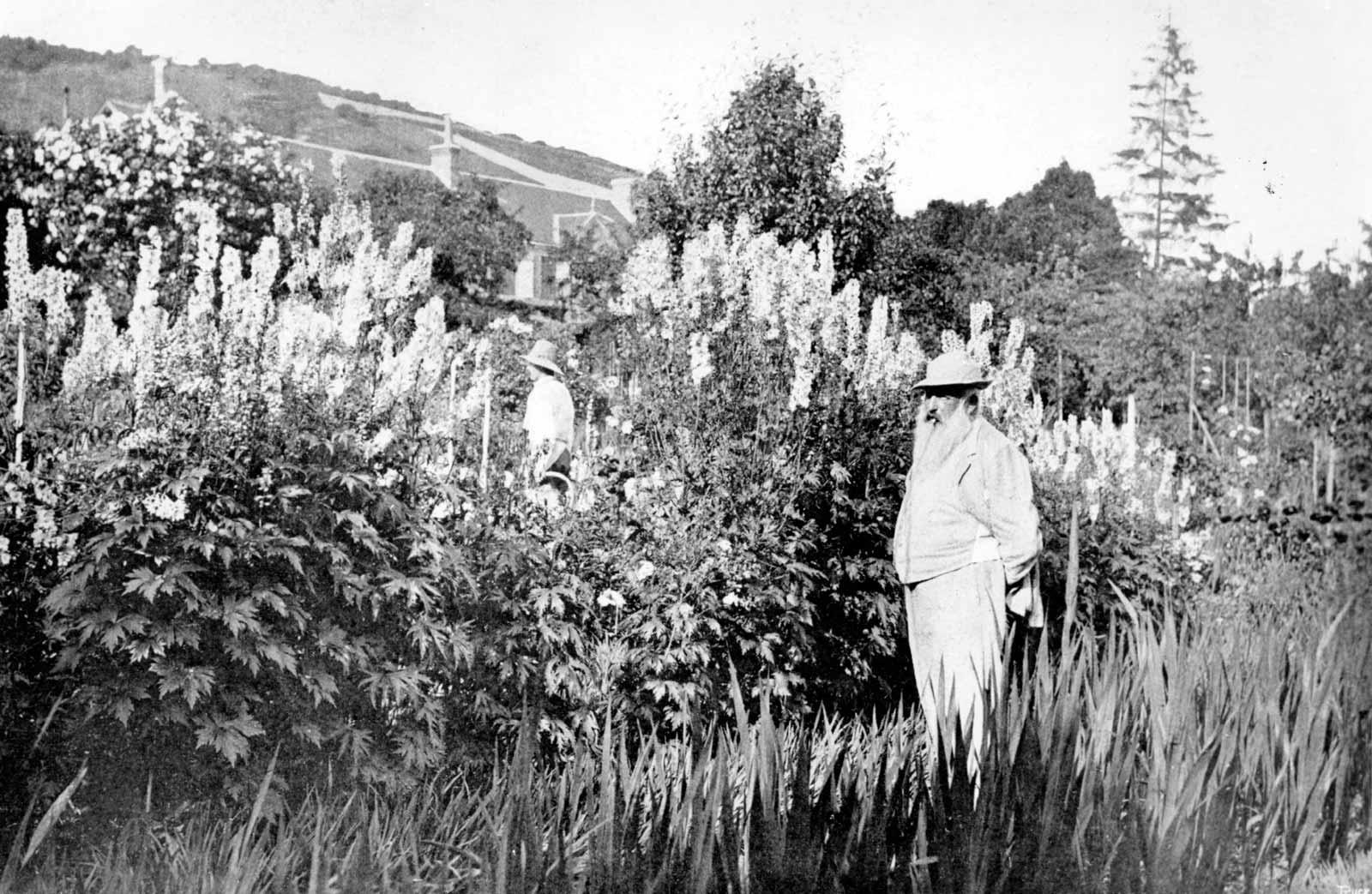UlaSeniman #4: Claude Monet
The Imperial of Impressionism
-Claude Monet
Monet was born by the name Oscar-Claude Monet on November 14th, 1840 in Paris, France. He was the second son of the couple Claude Adolphe Monet, a tradesman who opened a grocery store and Louise Justine Aubrée Monet who was a singer. Little Oscar (his parents’ given nickname) spent his childhood in Le Havre, Normandy, where his father’s store is located in. At the age of 15, he already managed to sell his own paintings. He started this by drawing caricatures using charcoal, which then being sold for around 10-12 francs each. Living as a student in Le Havre secondary school of the arts, Monet then met Eugène Boudin. He taught him to use oil paint and “en plein air” technique, which simply means painting outdoors. Unfortunately, in 1857, his mother passed away. He left school and lived with Marie-Jeanne Lecadre, his aunt. In 1861, Monet was drafted for a seven-year military service mandatory, but only did it for two years since he contracted typhus. His aunt was supportive and advised him to go continue pursuing his art education.
Monet jumpstarts his career in the Charles Gleyre studio, because there were some mismatches with what he had learned beforehand. He developed a genre called “Impressionism” with noted artists, such as Pierre-Auguste Renoir, Frédéric Bazille, Alfred Sisley, and Édouard Manet whom he met in Paris back before he’s in the military. Impressionism is an art genre that tries to display such impression of strong lightings, with an emphasis on the appearance of color rather than shape. The name itself was originally a title of Monet’s painting “Impression, Sunrise” (“Impression, soleil levant”) which then coined by M. Louis Leroy, an art critic who used it as a satire in his article on Le Charivari. The key ideas of Impressionism lie in the strength of each brush stroke, bright and cheerful colors, extroverted compositions, emphasis on the quality of the lighting, predominated painting subjects, and atypical viewpoints. Some impressionists even ‘blacklisted’ the color black, for it is not a representative of light.
In 1870, Monet relocated to England, shunned away from the heating political situation caused by the war between France and Prussia. He then became a disciple under John Constable and J.M.W. Turner who inspired him to explore more about colors. In the same year, he married Camille Doncieux, the woman in 1866 “La femme à la robe verte” painting. The following year, they moved to Argenteuil. In the midst of peaceful pastoral life near Seine river, they were graced by a second son and a plethora of esteemed paintings. Camille became ill during the second pregnancy, and sadly the condition got worse. After the passing of Camille, he painted several paintings called the The Ice Drift Series. It was a dozen visual depictions of melting ice floes on Seine River. Monet then remarried to Alice Hoschede in 1892.
Despite his struggle with depression in the later years, he still paints. His final work said to be “Les Roses” (“The Roses”), a piece heavily influenced by Eastern Asian culture. Monet passed away on December 5th, 1926 at his Giverny home. Having paintings stored and cherished in multiple galleries to museums, and inspires countless other artists, Claude Monet is indeed verified as such a prolific artist. His vision of the grander things in life translated easily through his paintings, they even transcend through space and time. As if with his canvases and oil paints, he tried to tell us one thing: that life can be beautiful as it is, depends on your own impression of it.
Sources are listed below:
https://www.biography.com/artist/claude-monet
https://www.artsy.net/artwork/claude-monet-argenteuil
https://www.artandobject.com/articles/monets-letters-paint-picture-man-behind-masterpieces
https://denverartmuseum.org/article/20-quotes-claude-monet
Potts, Vanessa, and Claire I. R. O'Mahony. Monet. Bath, UK: Parragon, 2002. Print.





Awesome article, myNuelle!!! keep up your good spirit!
ReplyDelete